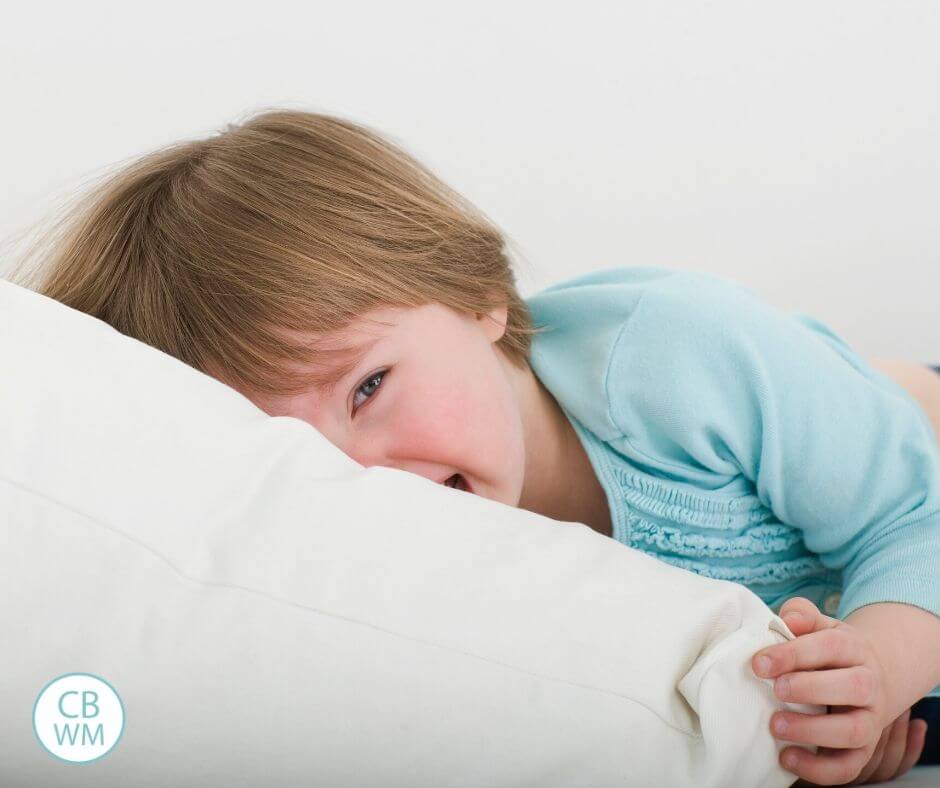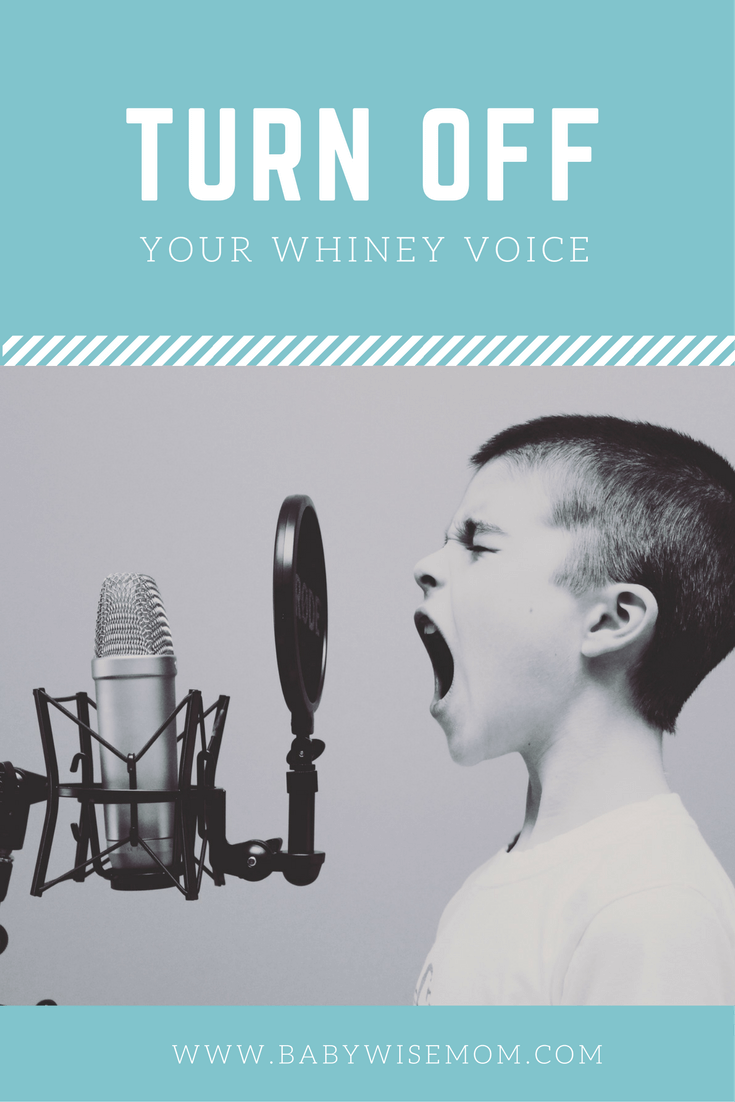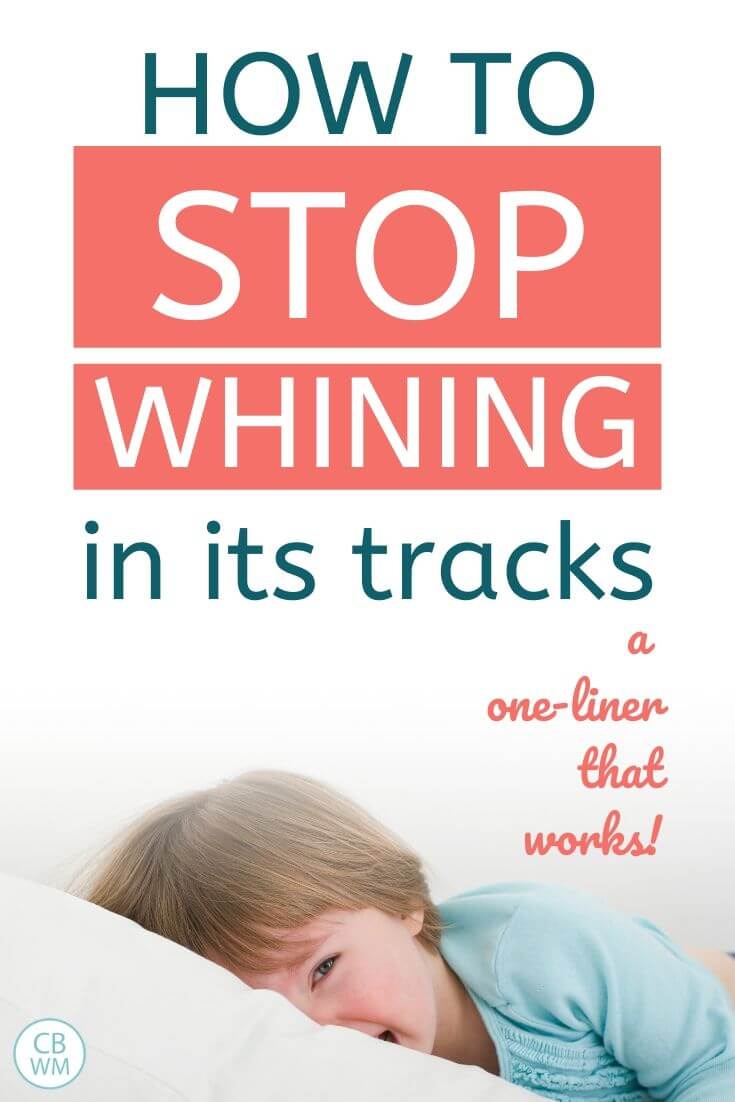Is your toddler whining? Try out this simple one-liner to get your little one to stop whining immediately and have some peace.

Whining. I don’t think there is much that grates on the nerves of parents more than whining. Any parent who has a child who whines a lot desperately seeks the advice of other parents on how to stop the whining.
How to Stop Whining
There are many possible paths you can take to curbing whining.
You can ignore the child when they whine.
You can require the statement that was said in a whiney way be made again in a non-whiney way.
You can set the timer and let them try again when it goes off, similar to ideas outlined in The Timer.
Read: Structure Deters Whining
You can tell your child over and over again to not whine.
You can respond to the whining by whining yourself.
Any one of these can work. Most likely, a combination will be required.
One-Liner to Stop a Whining Child
I have found something that is the best for Kaitlyn to stop the whining.
All of those other things mentioned above seemed to work fine for Brayden, but for Kaitlyn, it just wasn’t cutting it. A couple of weeks ago, I found my new favorite discipline phrase.
“Kaitlyn. Turn off your whiney voice.”

BAM!
Instantly, the whining is gone.
Instantly.
It is like magic. Good magic.
You know, in all honesty, it seems strange to me that this works best for her.
In theory, the ignoring until they are done whining sounds like a good one. But let’s be real. This typically just creates more whining, which then escalates into full-on crying.
At some point, you are going to respond to your child and your whole tactic just created a bigger problem.
I think ignoring can work fine for older kids who know better, but not our little toddlers are still in the heat of training.
Restating things in a non-whiney way can be effective. It works on teaching correct habits. But if it is the only thing you ever do, then your child doesn’t learn to never whine.
I love the timer. It has worked wonders in so many aspects of our lives. But again, I think this is something that will be more effective for the older children. I can see it being good for the older toddler. But it has potential really cause things to escalate with your young toddler.
I think looking at your whining 20 month old in the eye and saying, “Kaitlyn, don’t whine” is great. Do it calmly and matter-of-factly. It helps the child recognize when she is whining.
Another activity that teaches what whining is to whine yourself. For the toddler, I think it would be best to demonstrate whining in times of non-conflict. This means you show her while she is happy and not whining. Don’t try to teach her as she is whining.
For the preschooler, whining back can be a tension breaker and cause you both to bust out laughing. Then you can talk like civilized people. That’s always nice.
Conclusion
A combination of the tactics discussed in this post is usually best.
Change your approach as your child grows.
Currently, “turn off your whiney voice” is doing wonders for Kaitlyn. With all the others, she would talk in a normal voice for a sentence or two and then go back to whining. With our new phrase, she stops and is non-whiney for days. Really.
I think the phrasing of it shows her she has control over it. She can still talk to me about what she wants to talk about, she just needs to turn that whiney voice off first.
RELATED POSTS
- How to Prevent Whining
- Discipline Phrases
- The Perfect Way to Respond to a Dramatic Child
- 7 Phrases to Help You Avoid Losing Your Temper as a Parent

